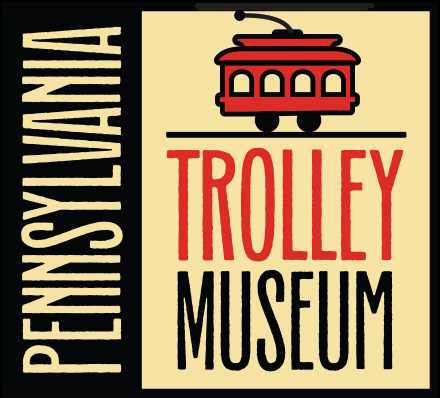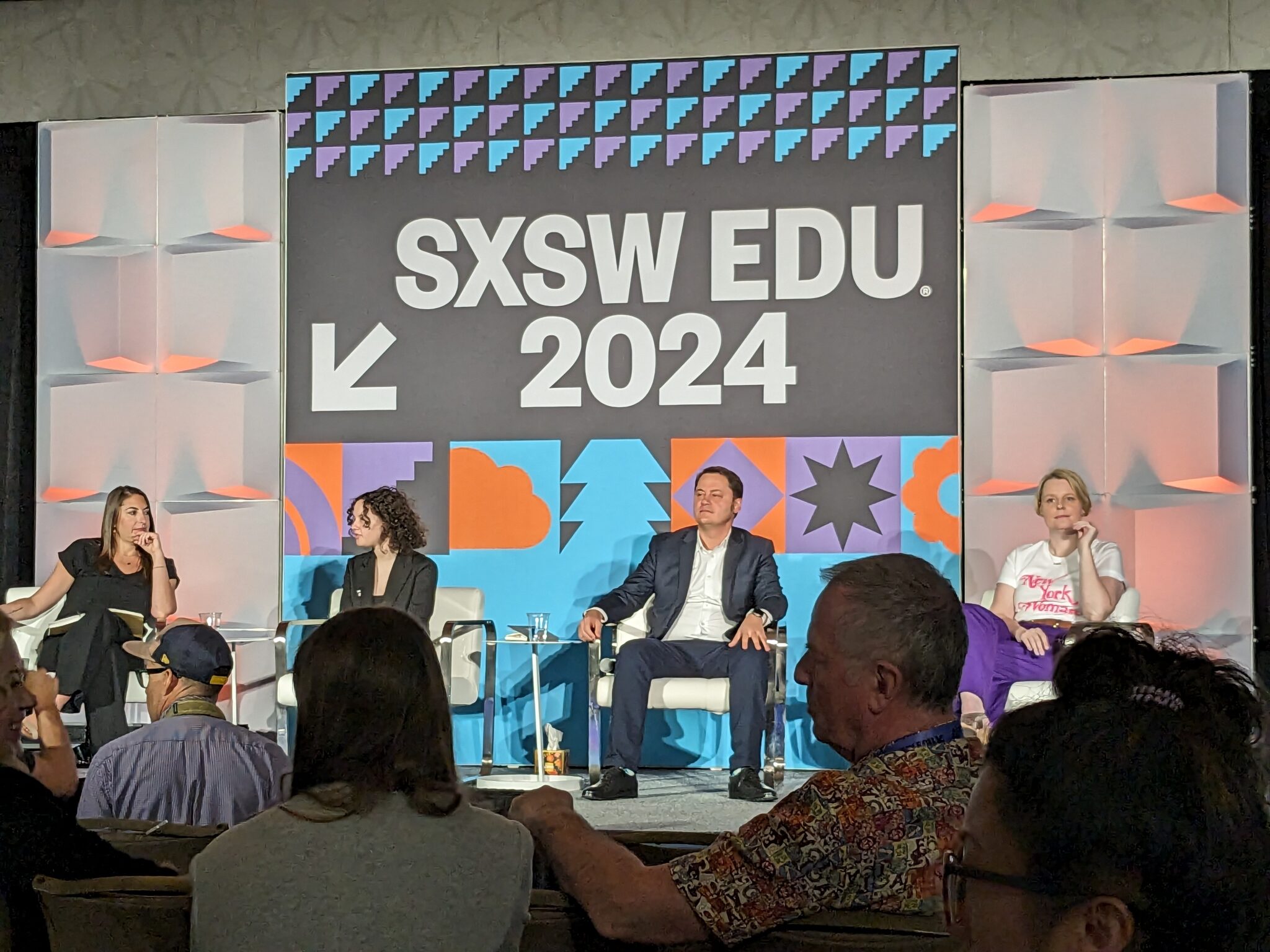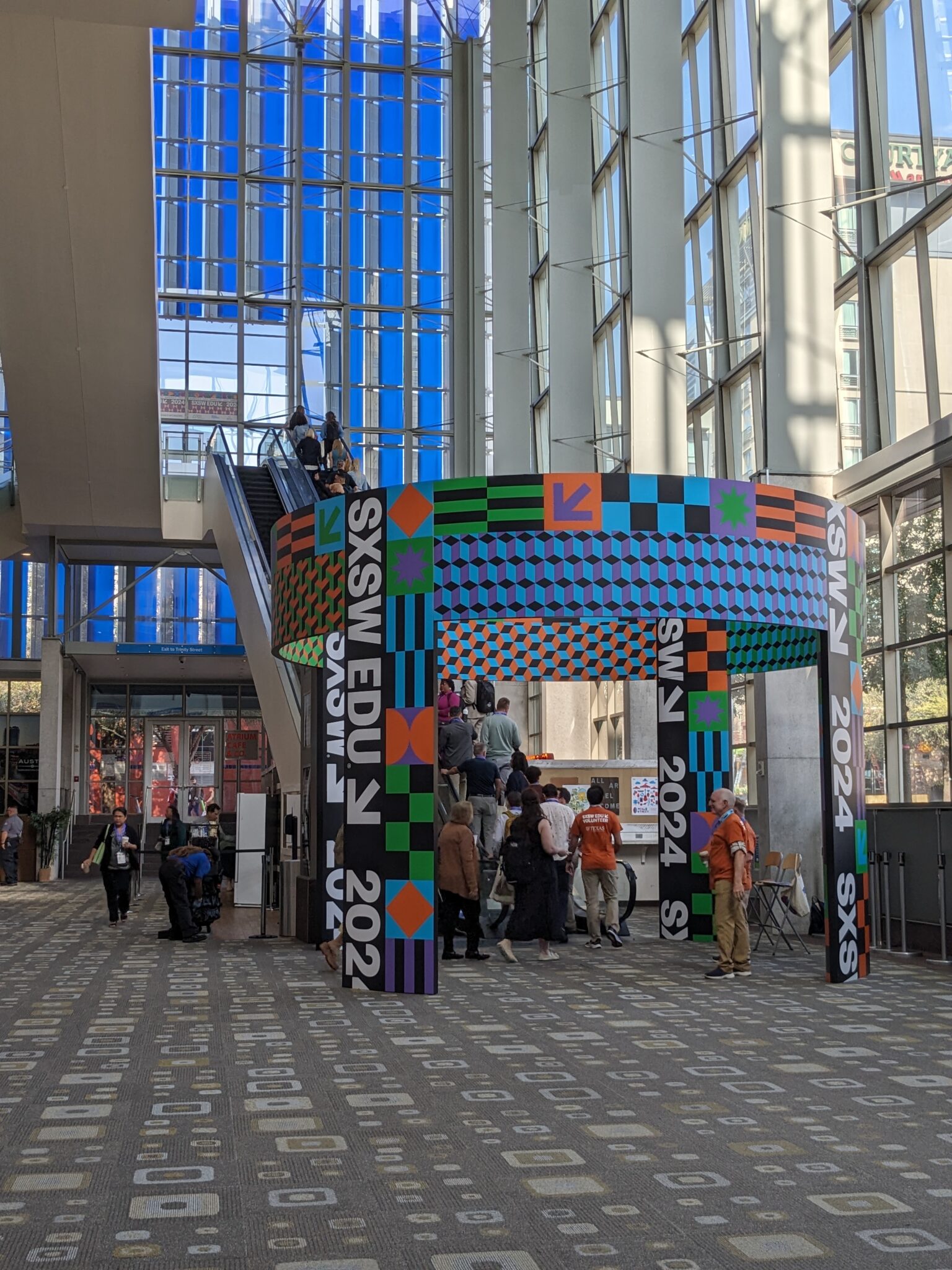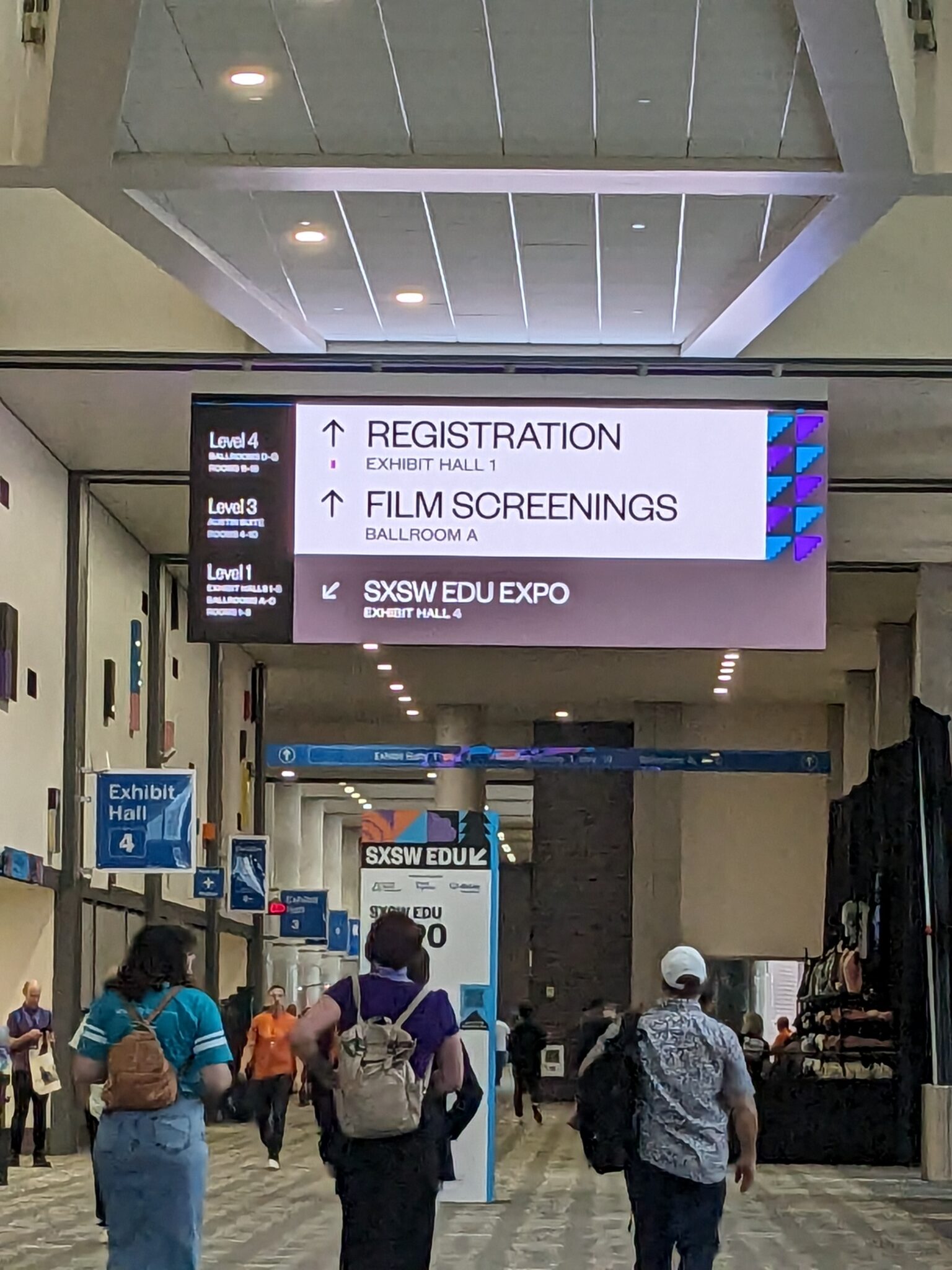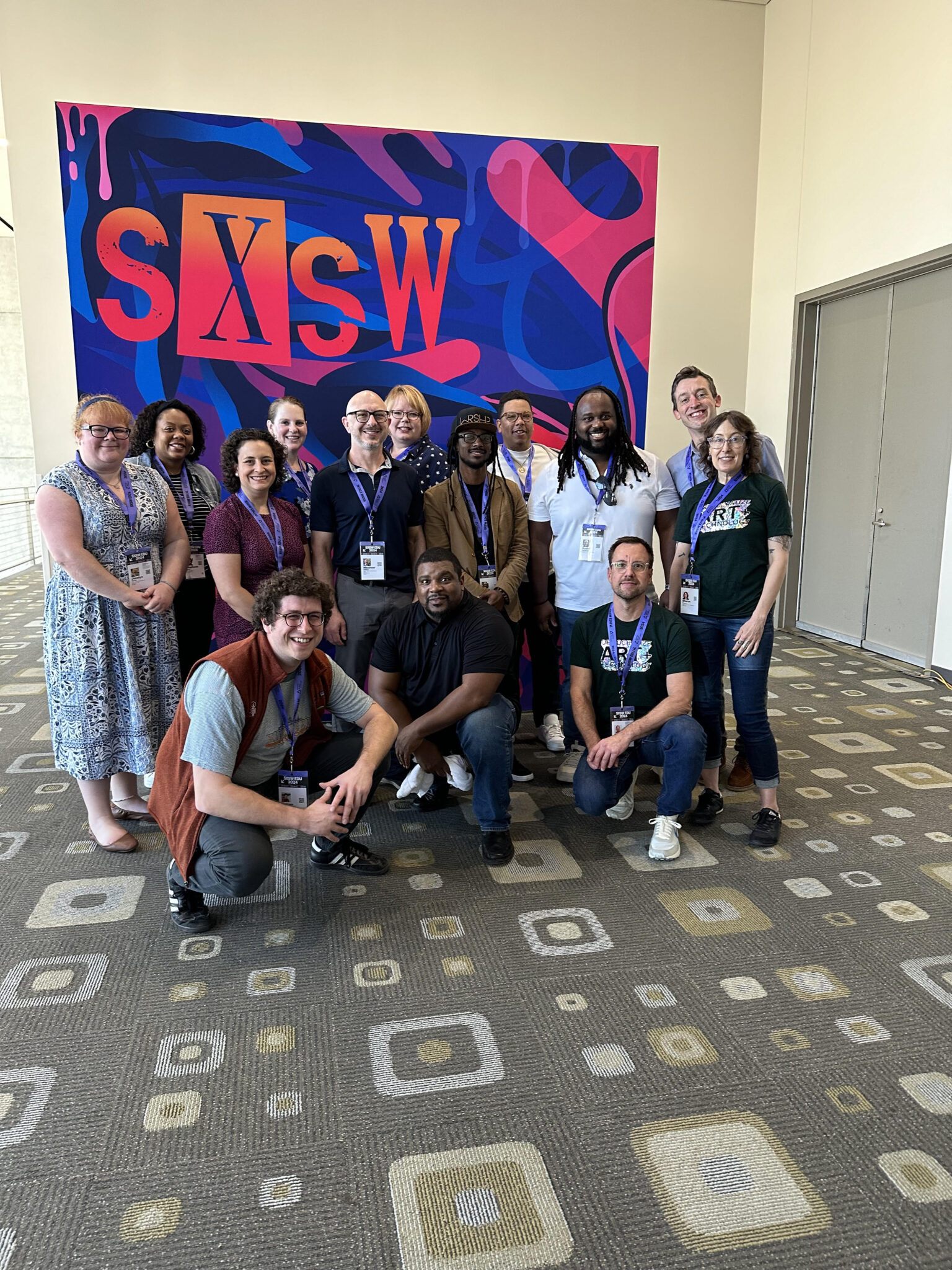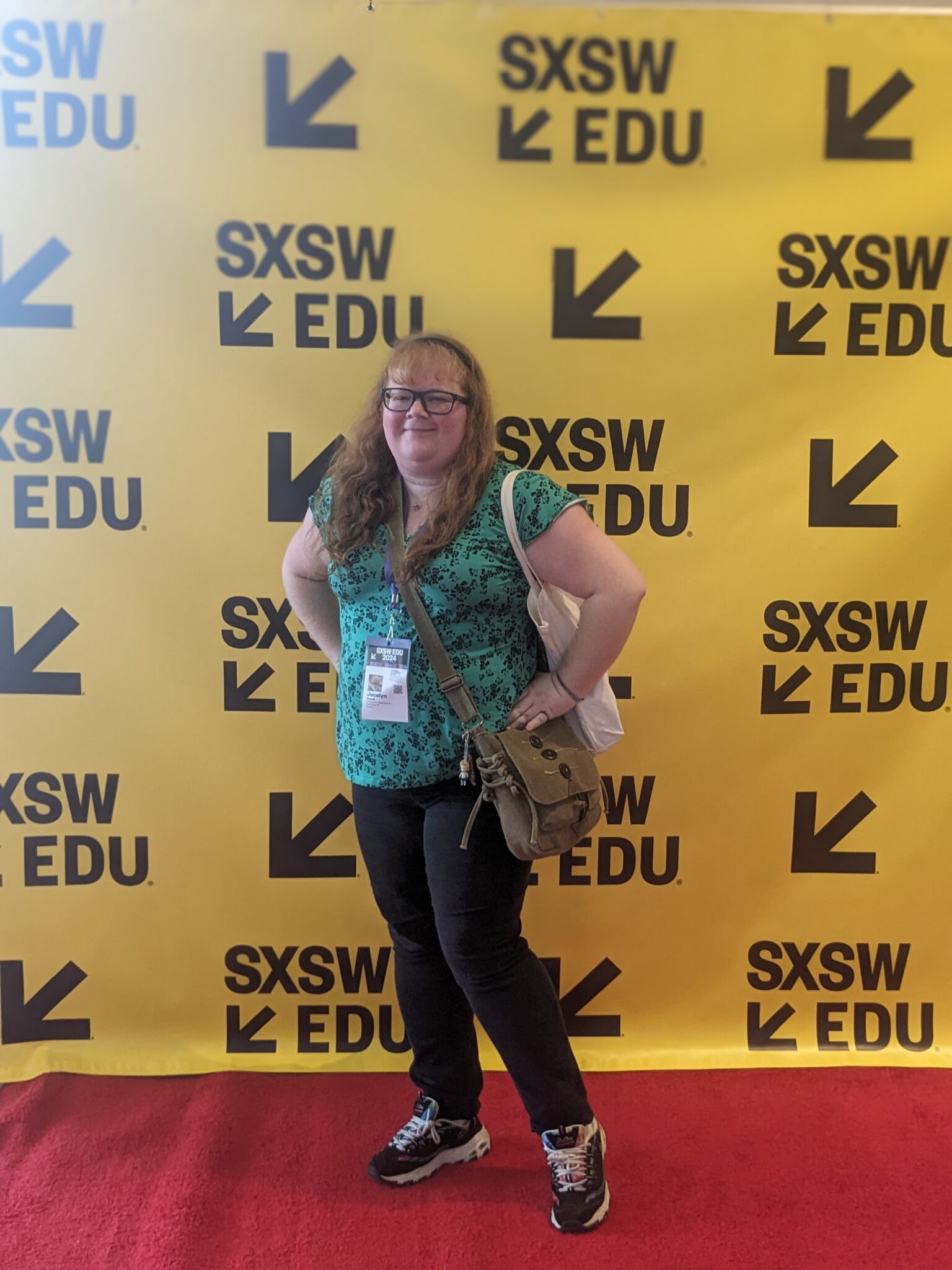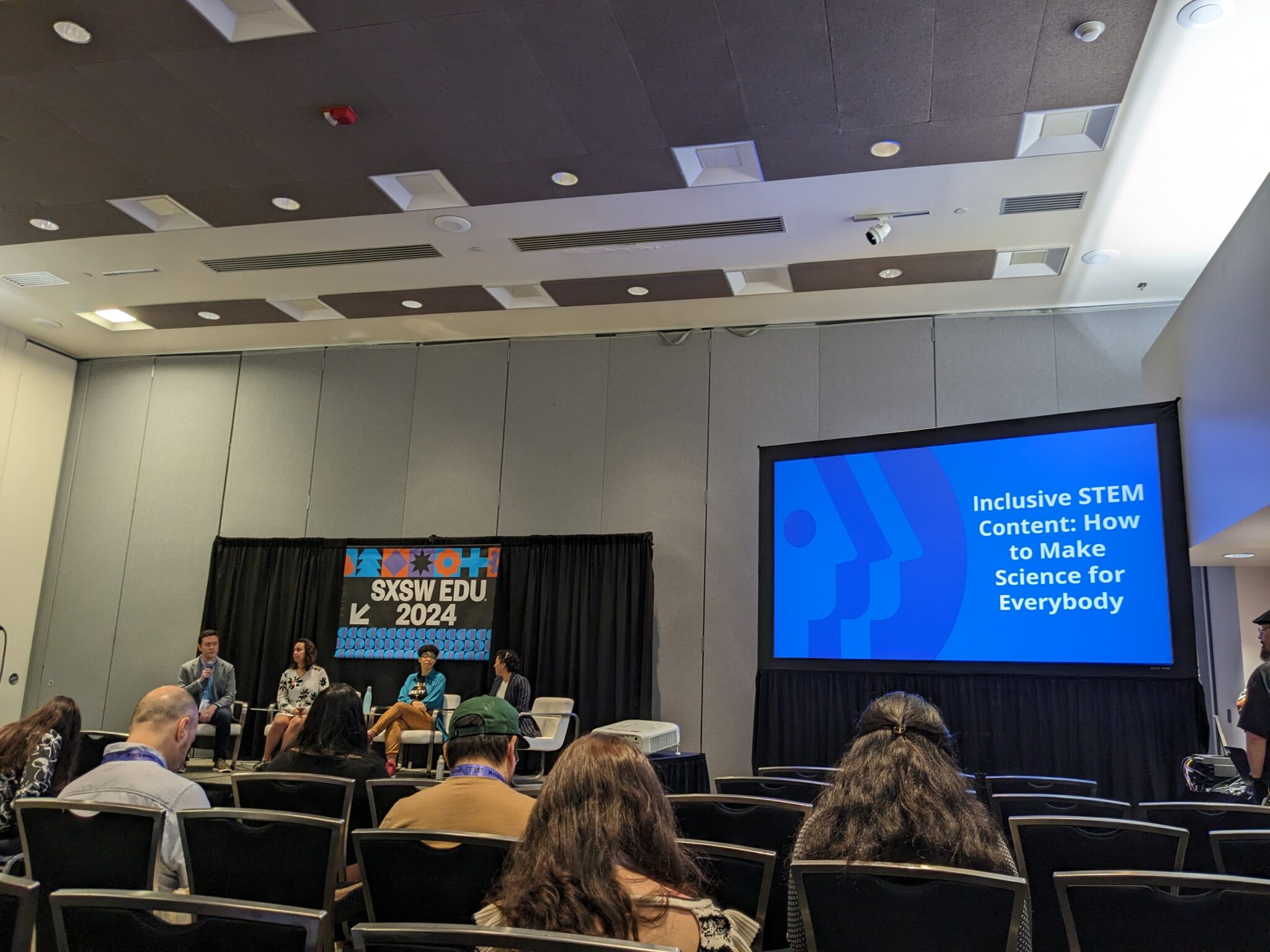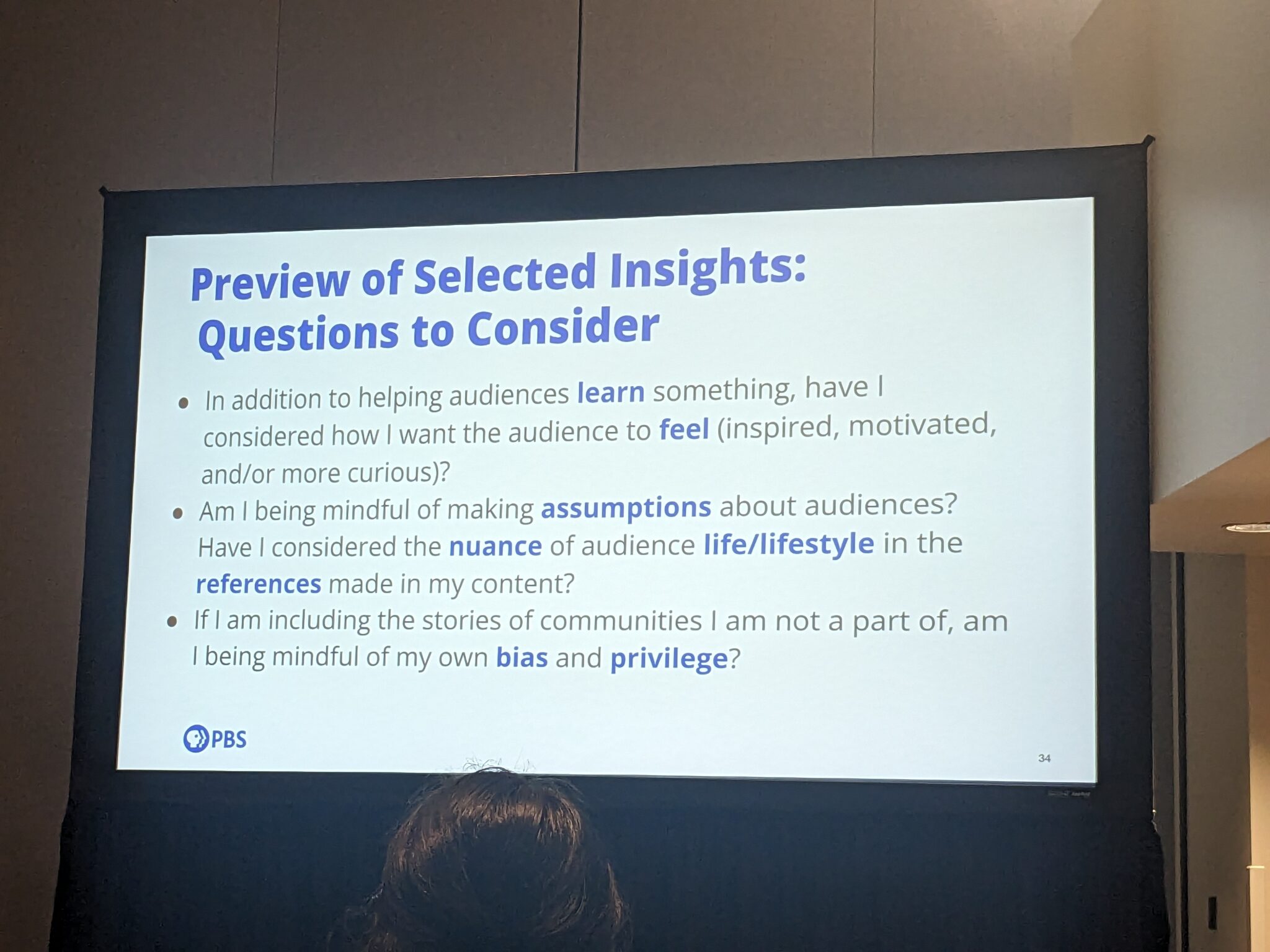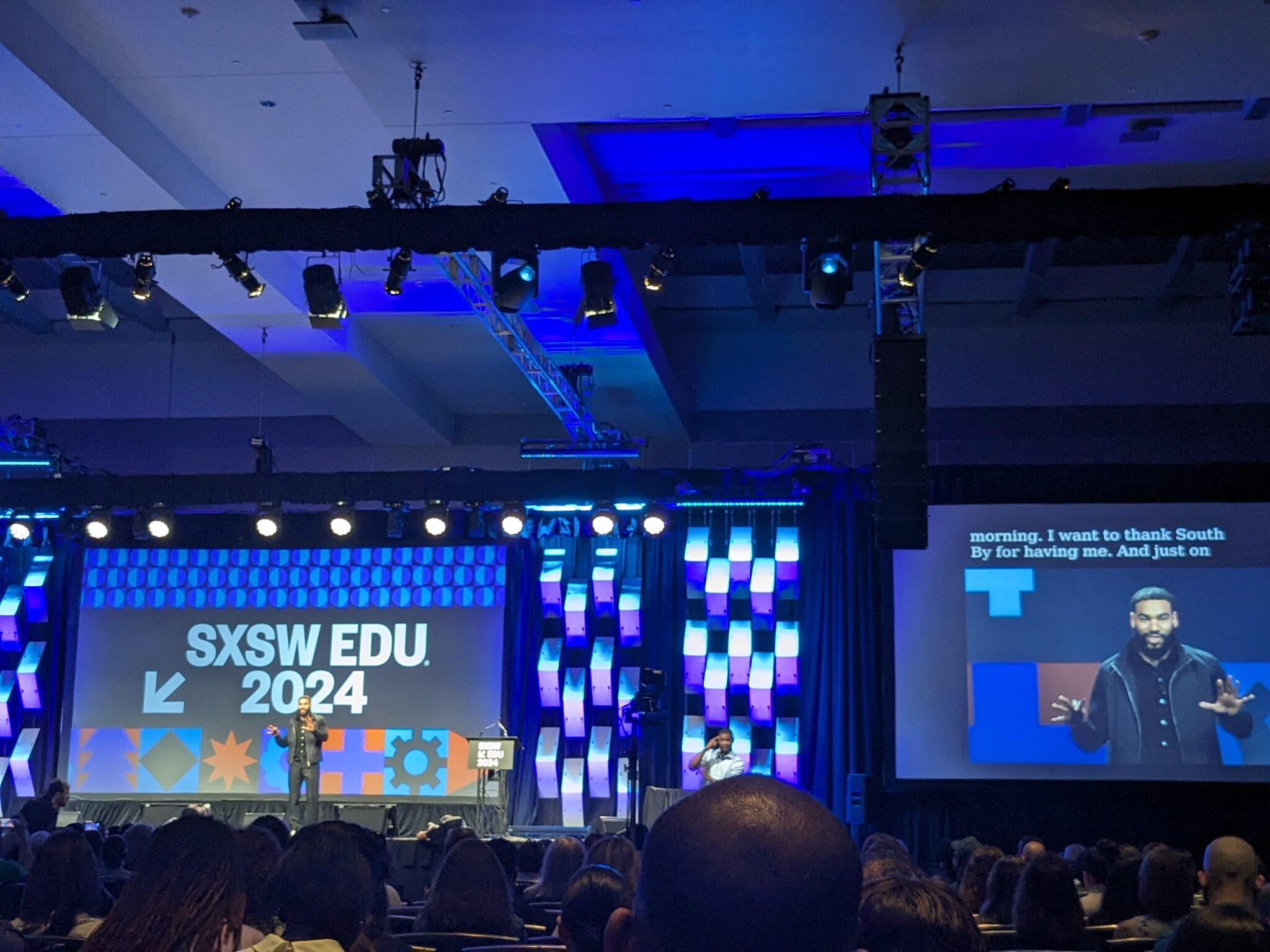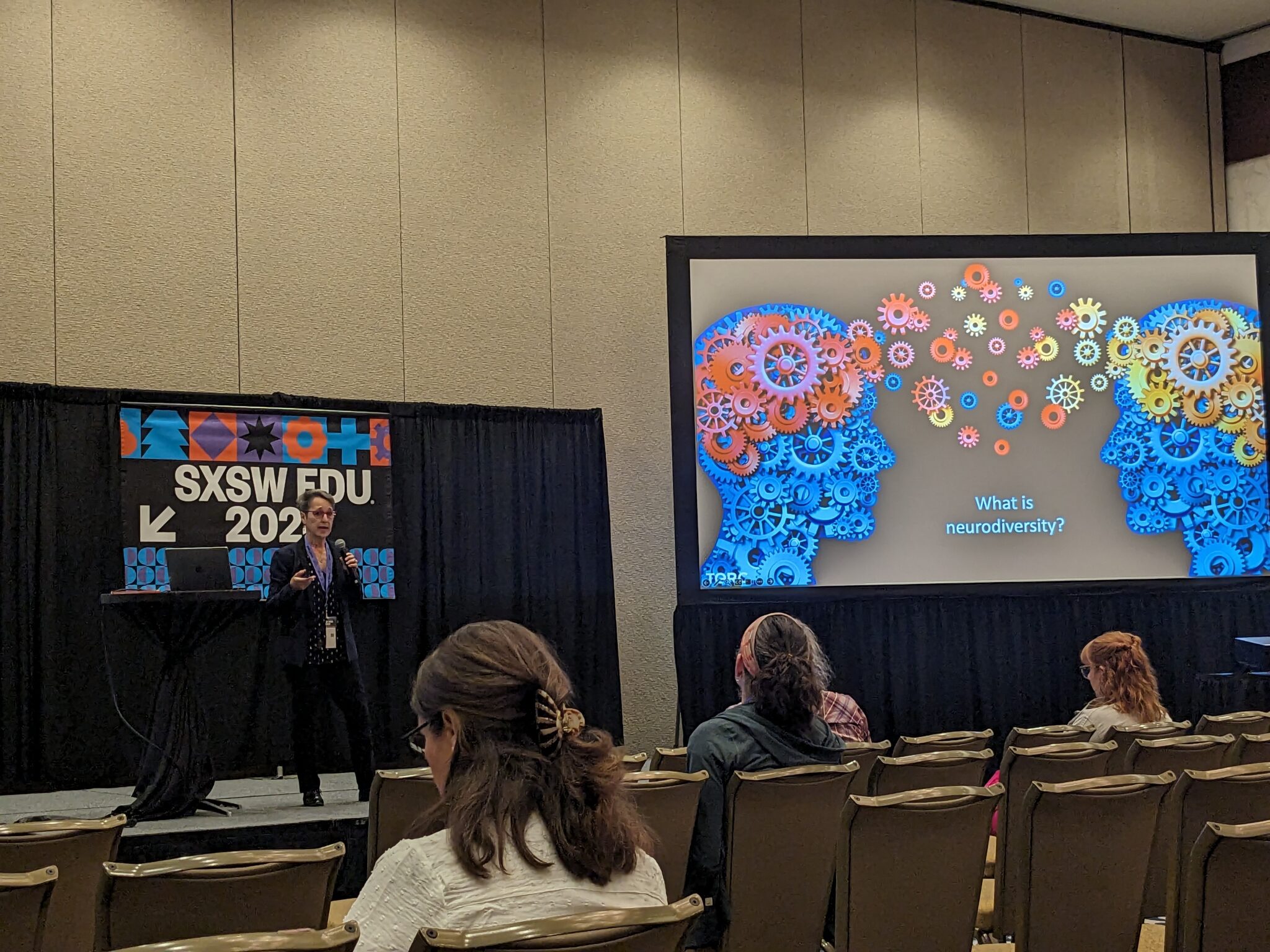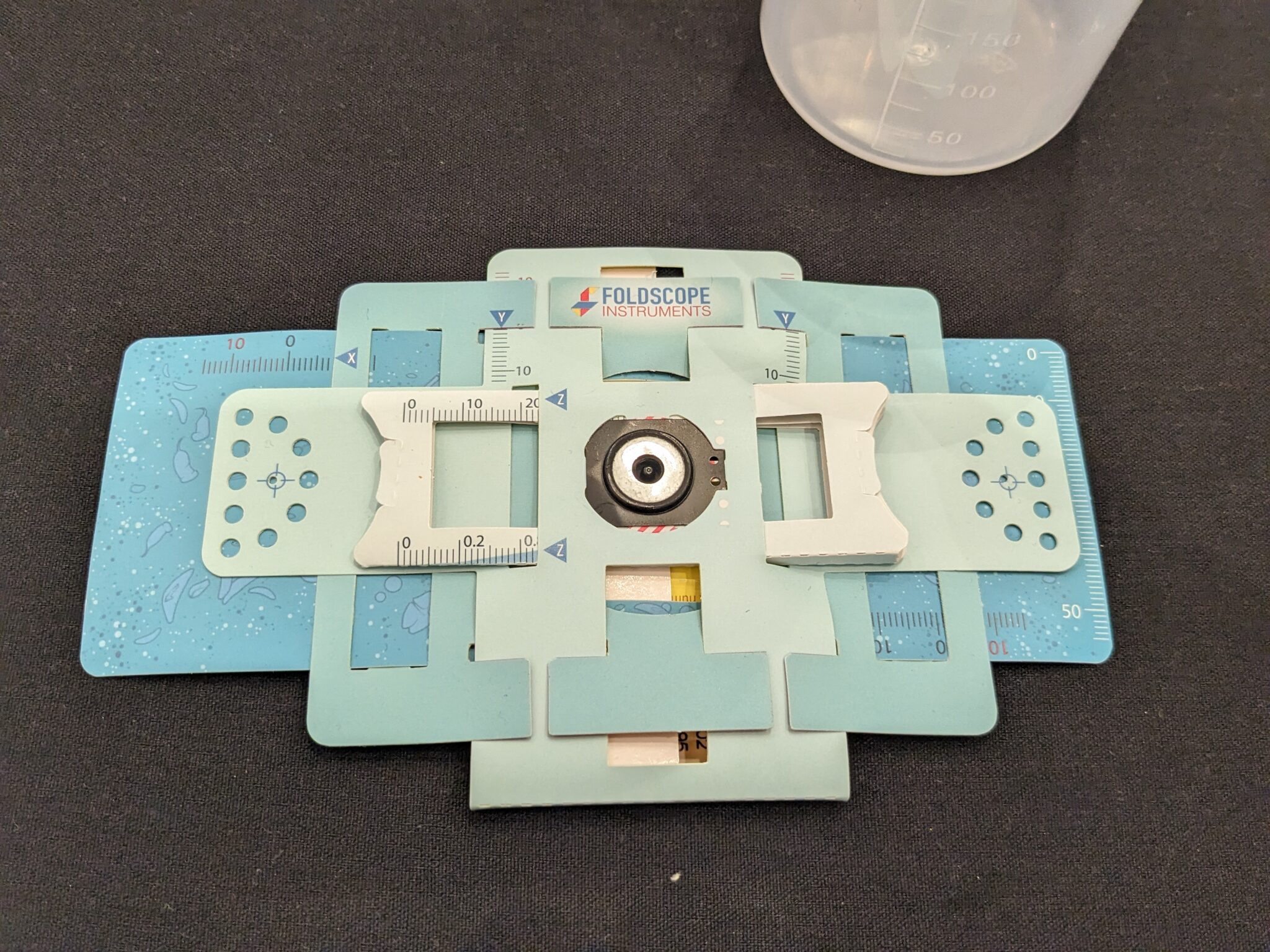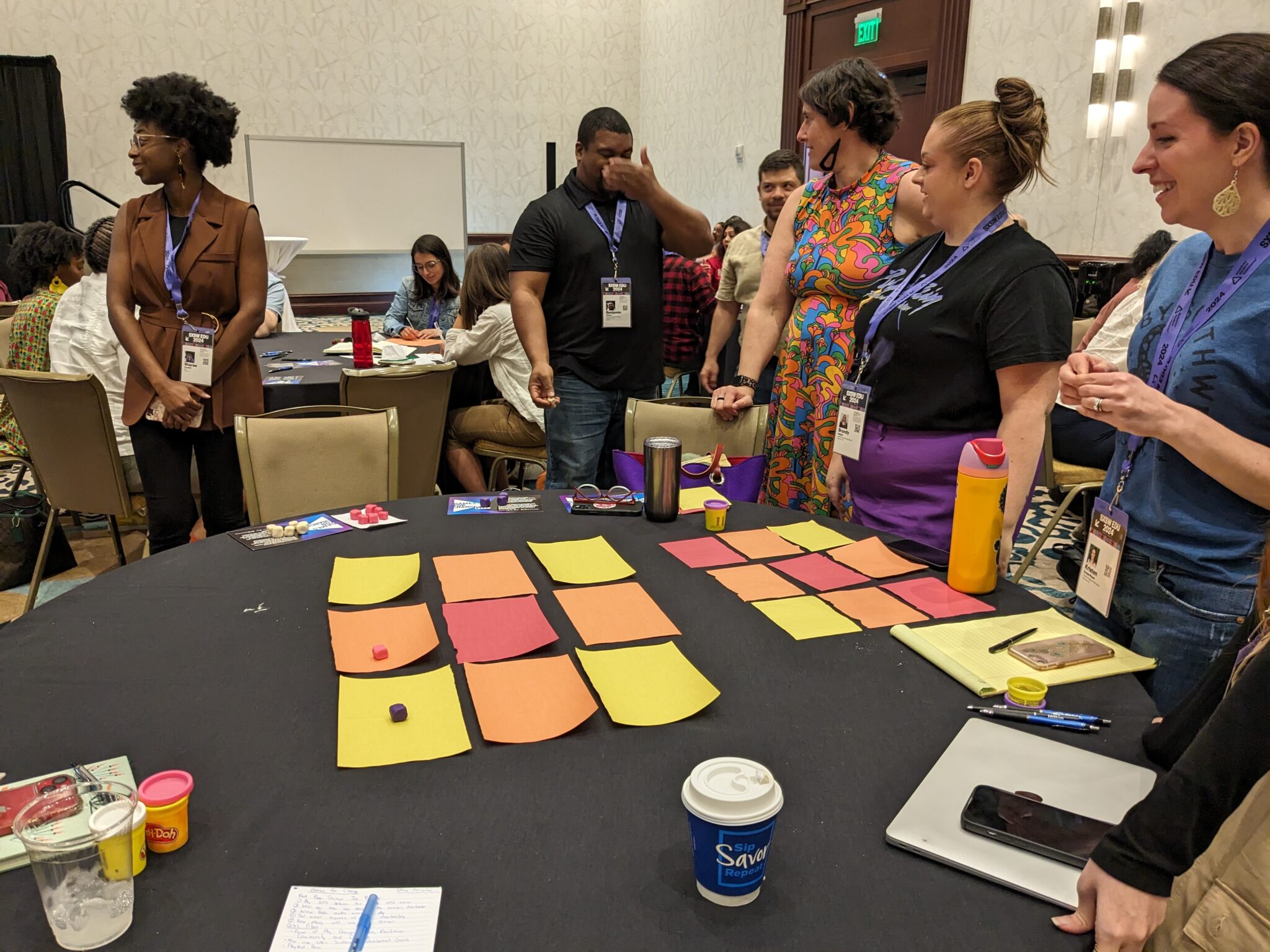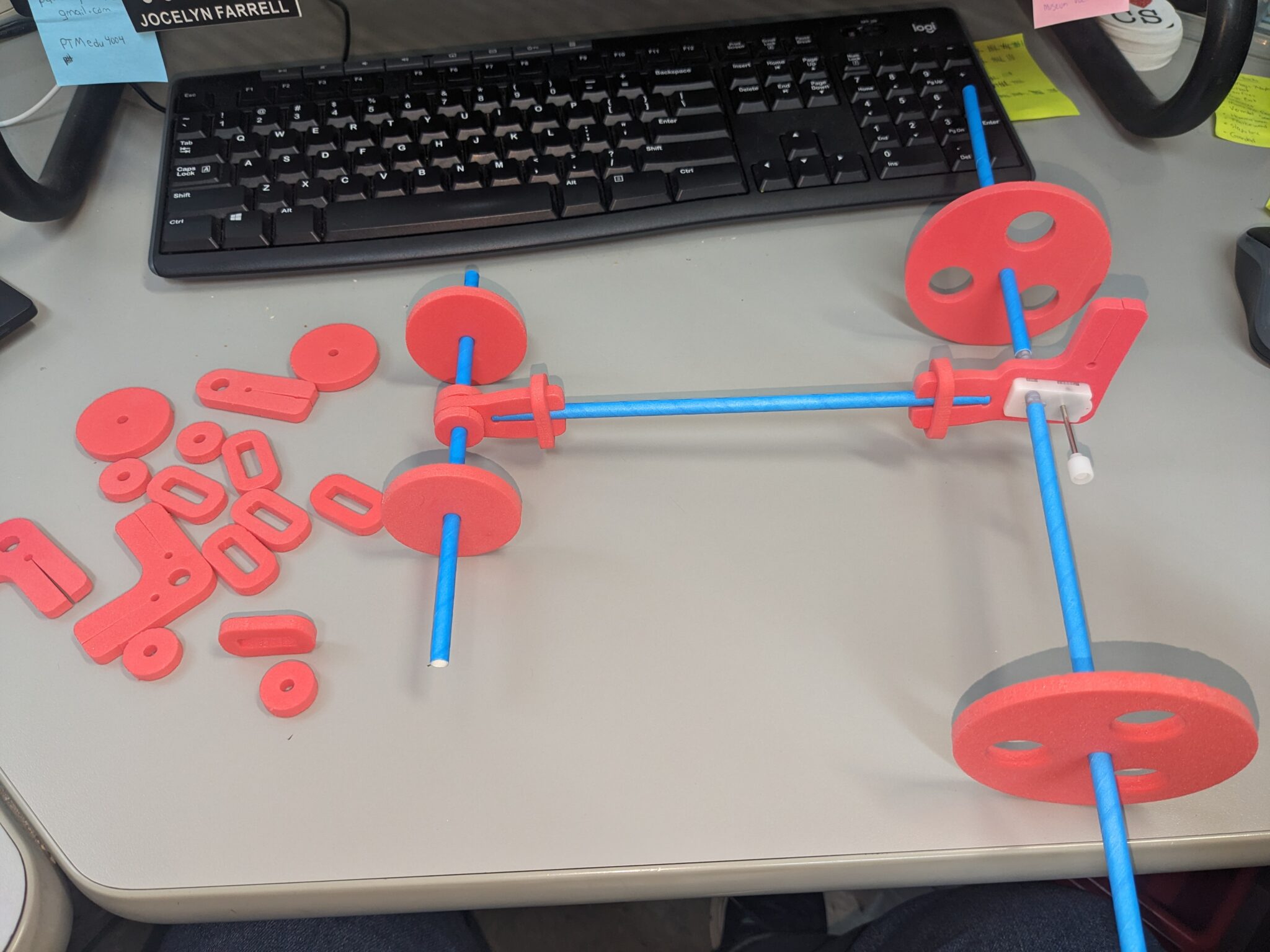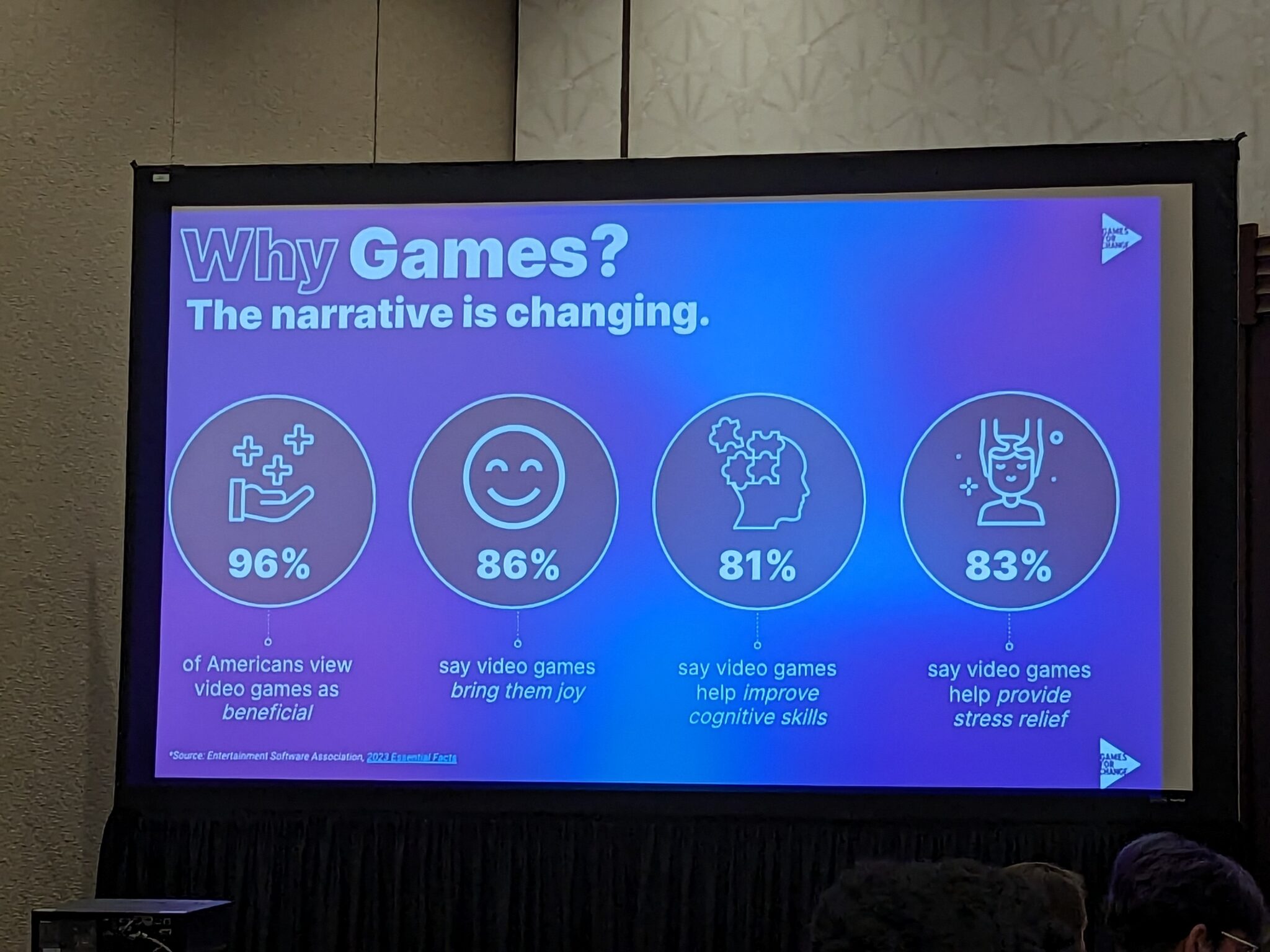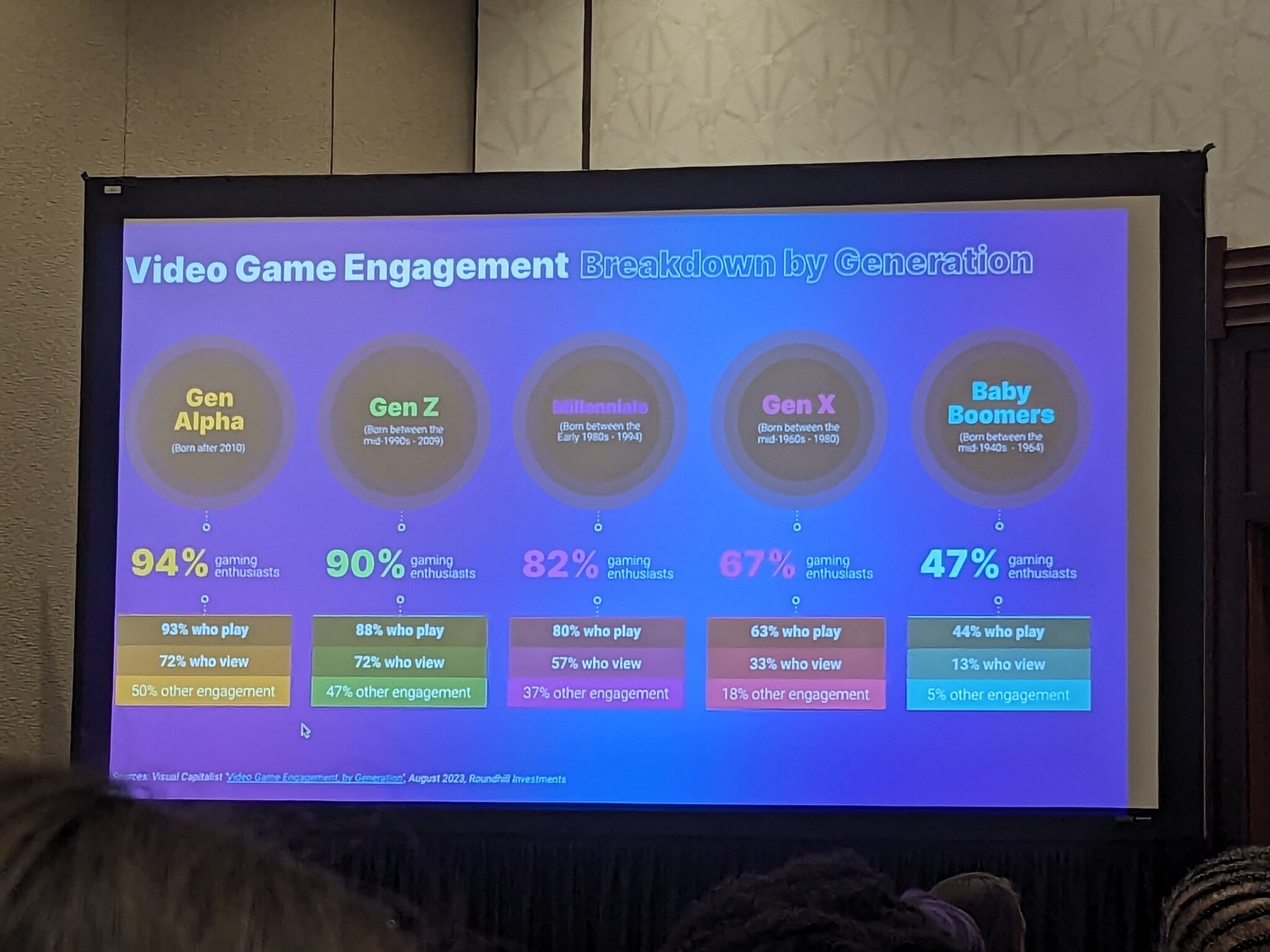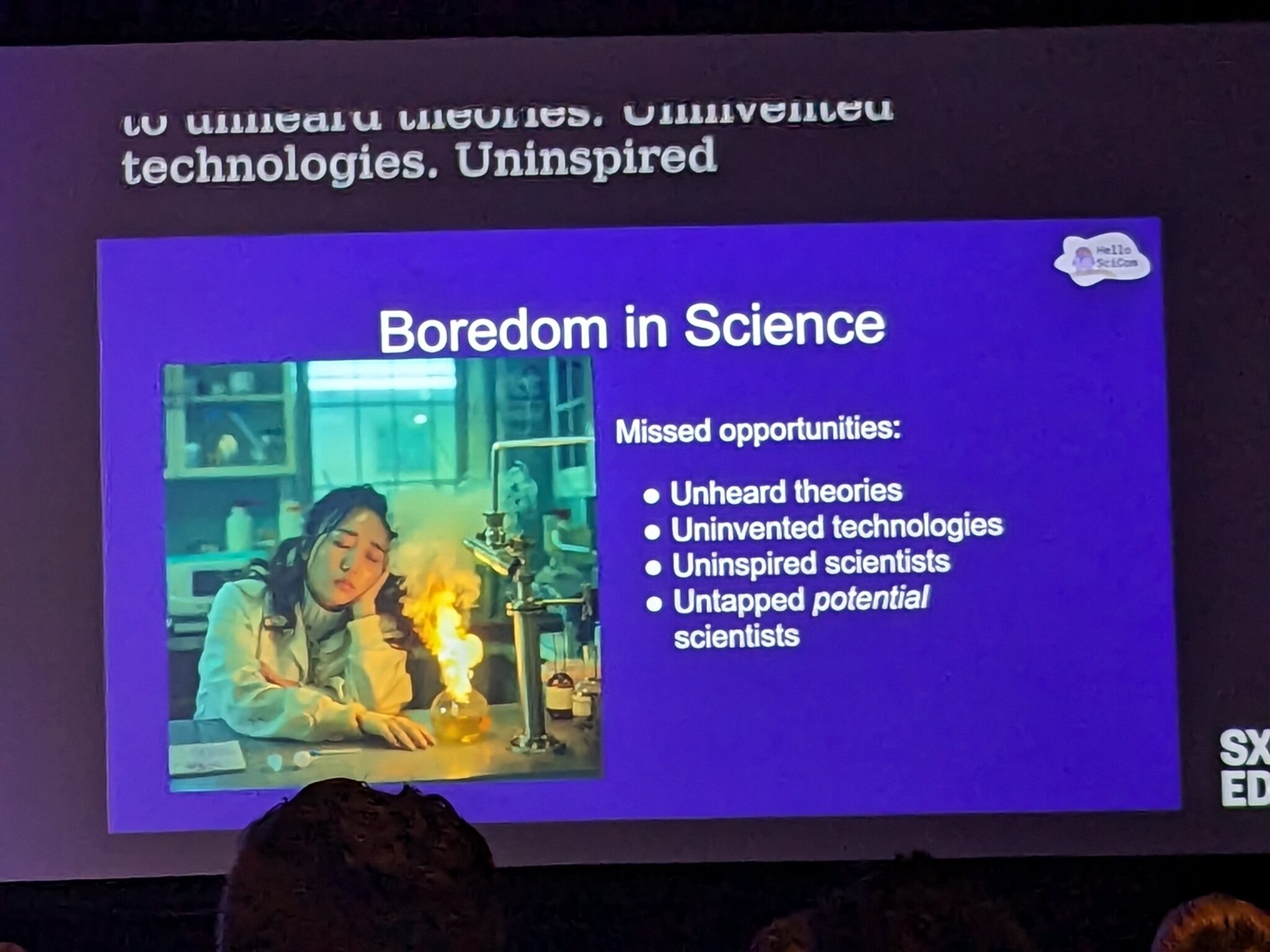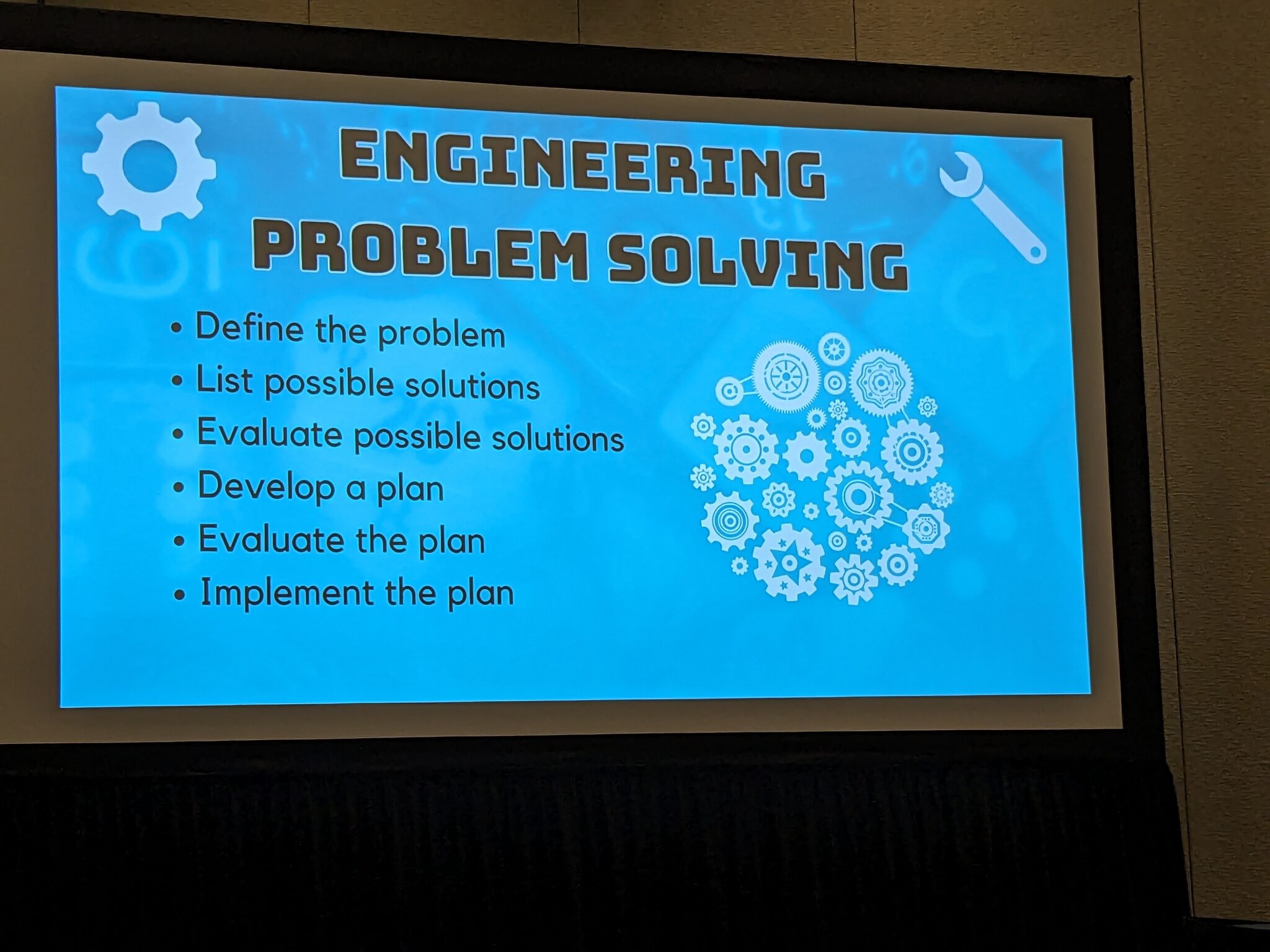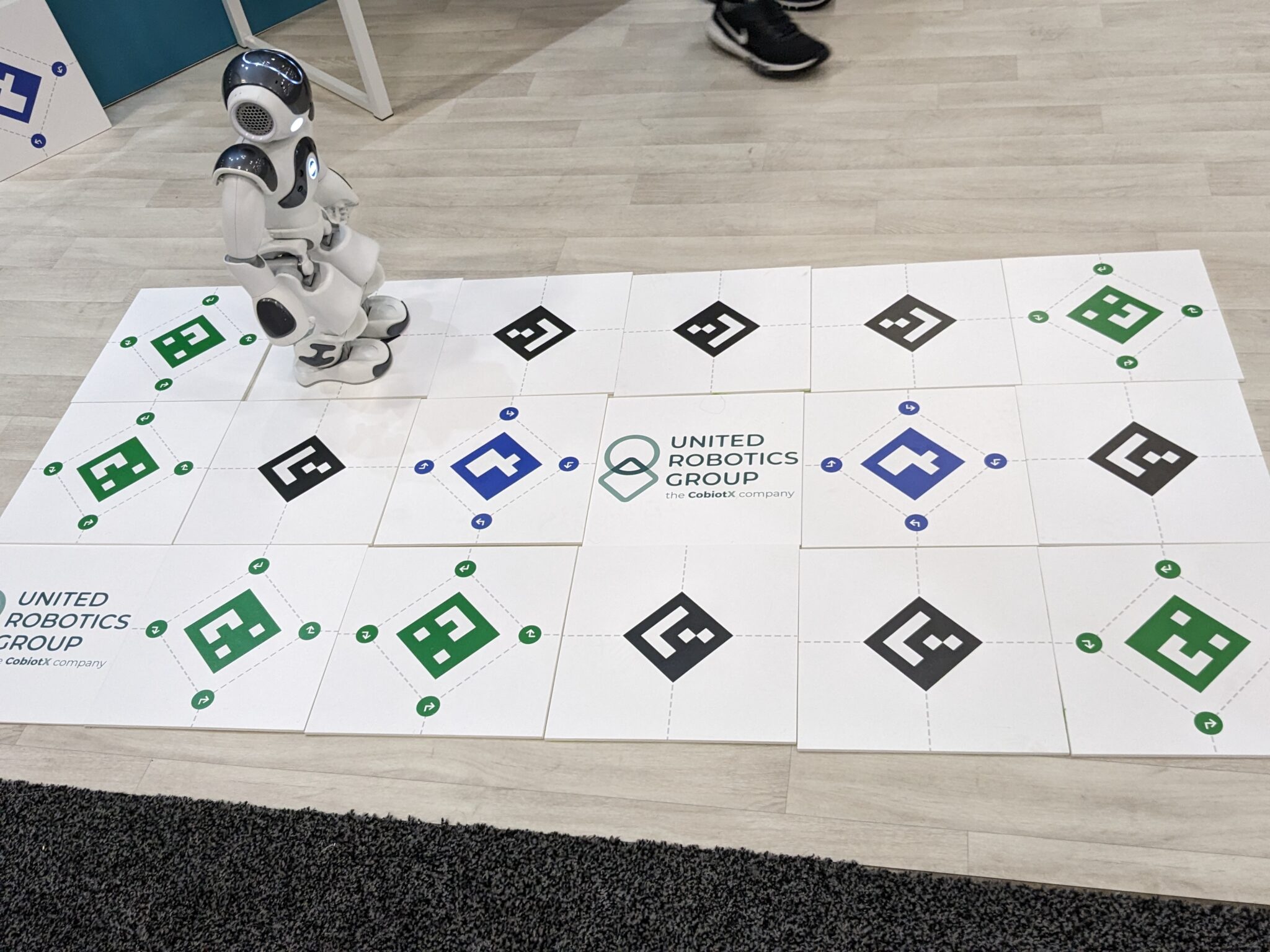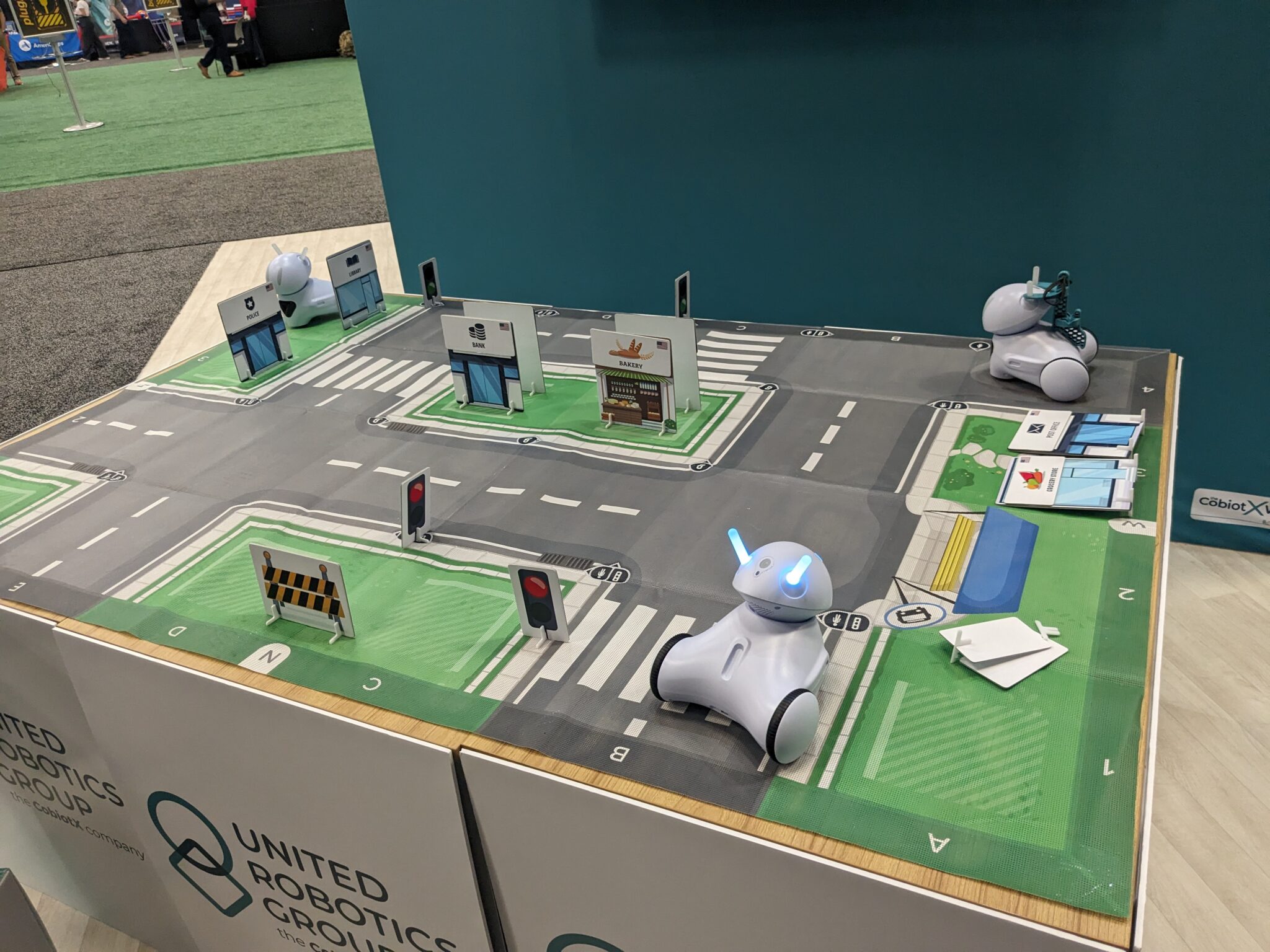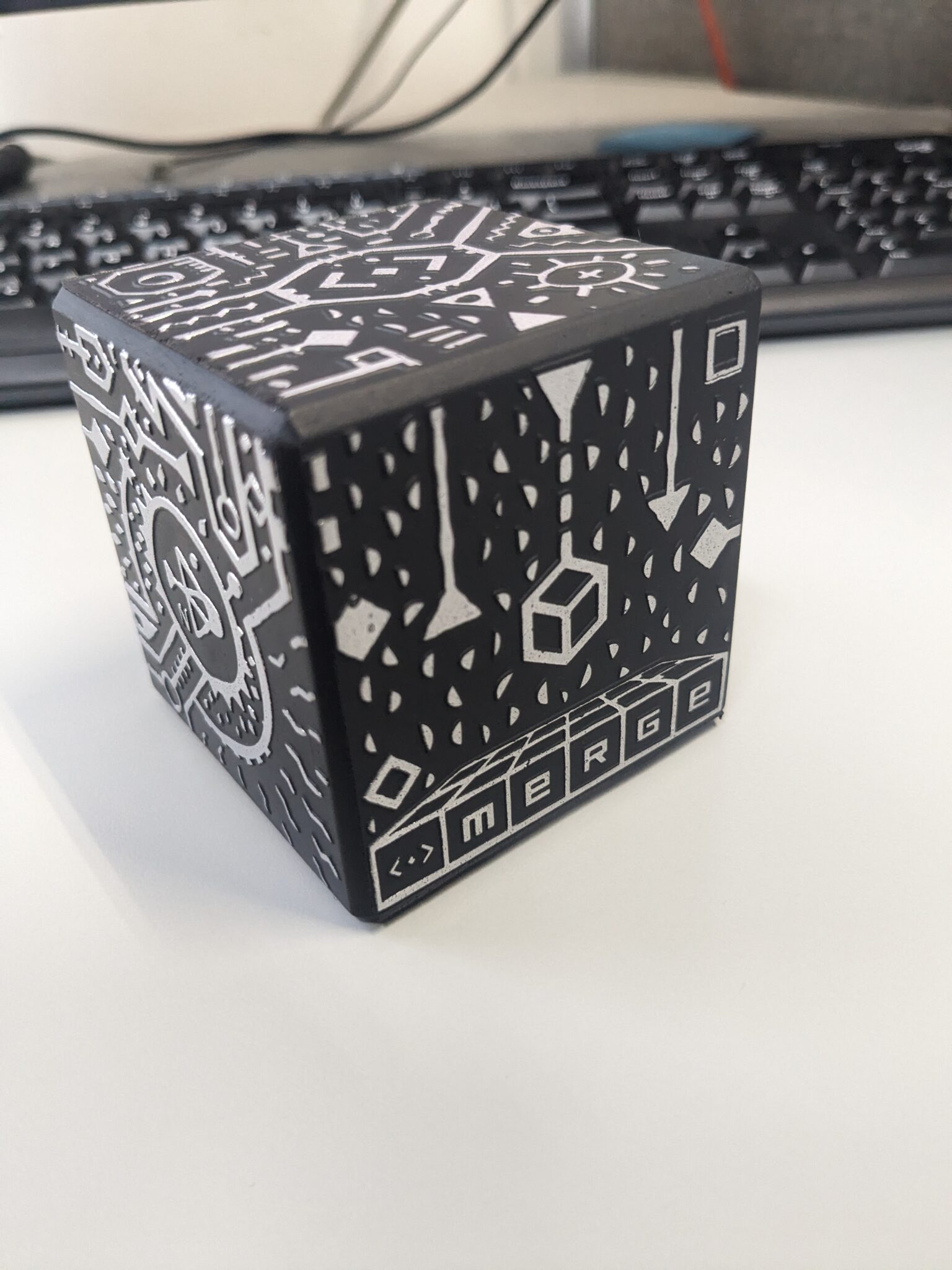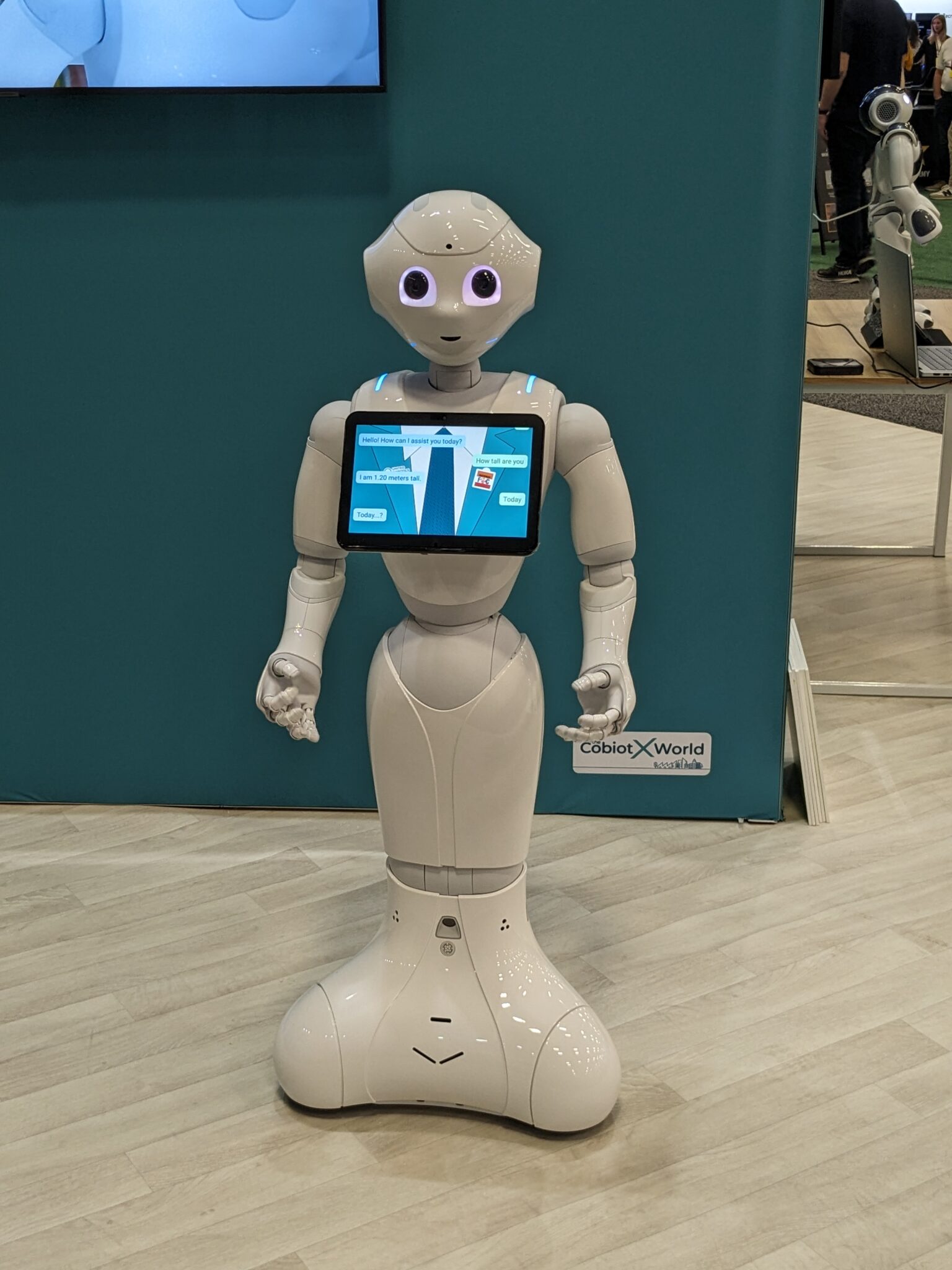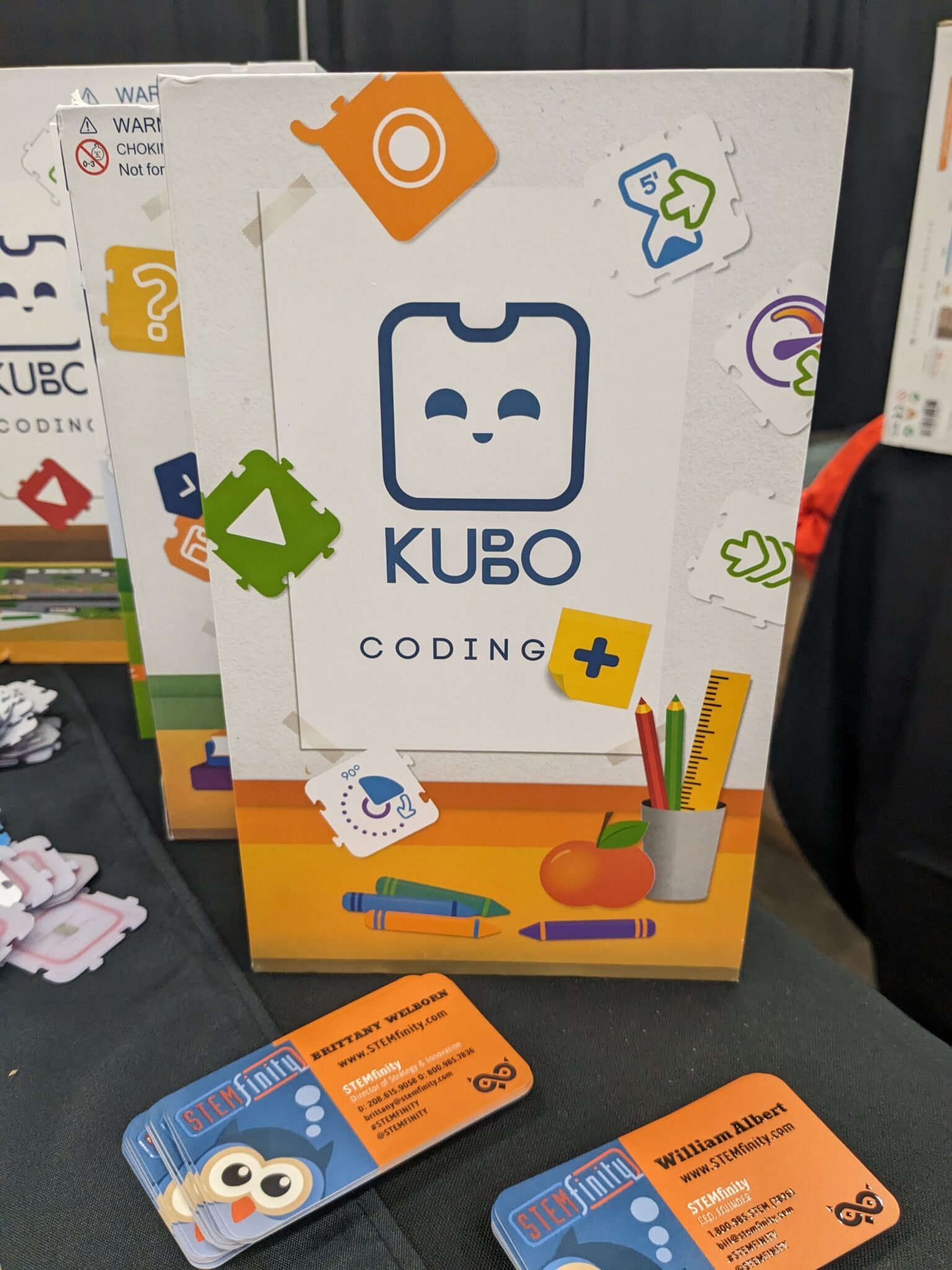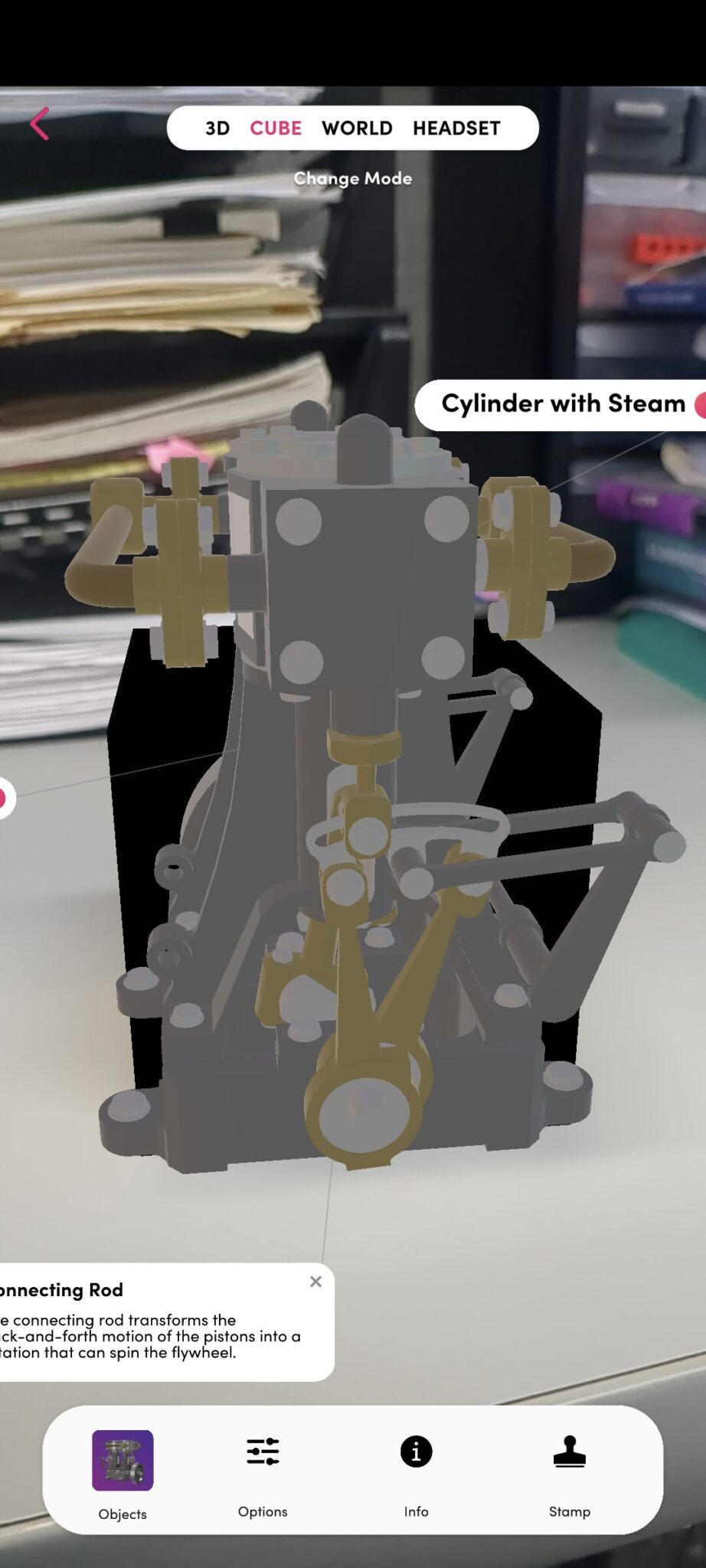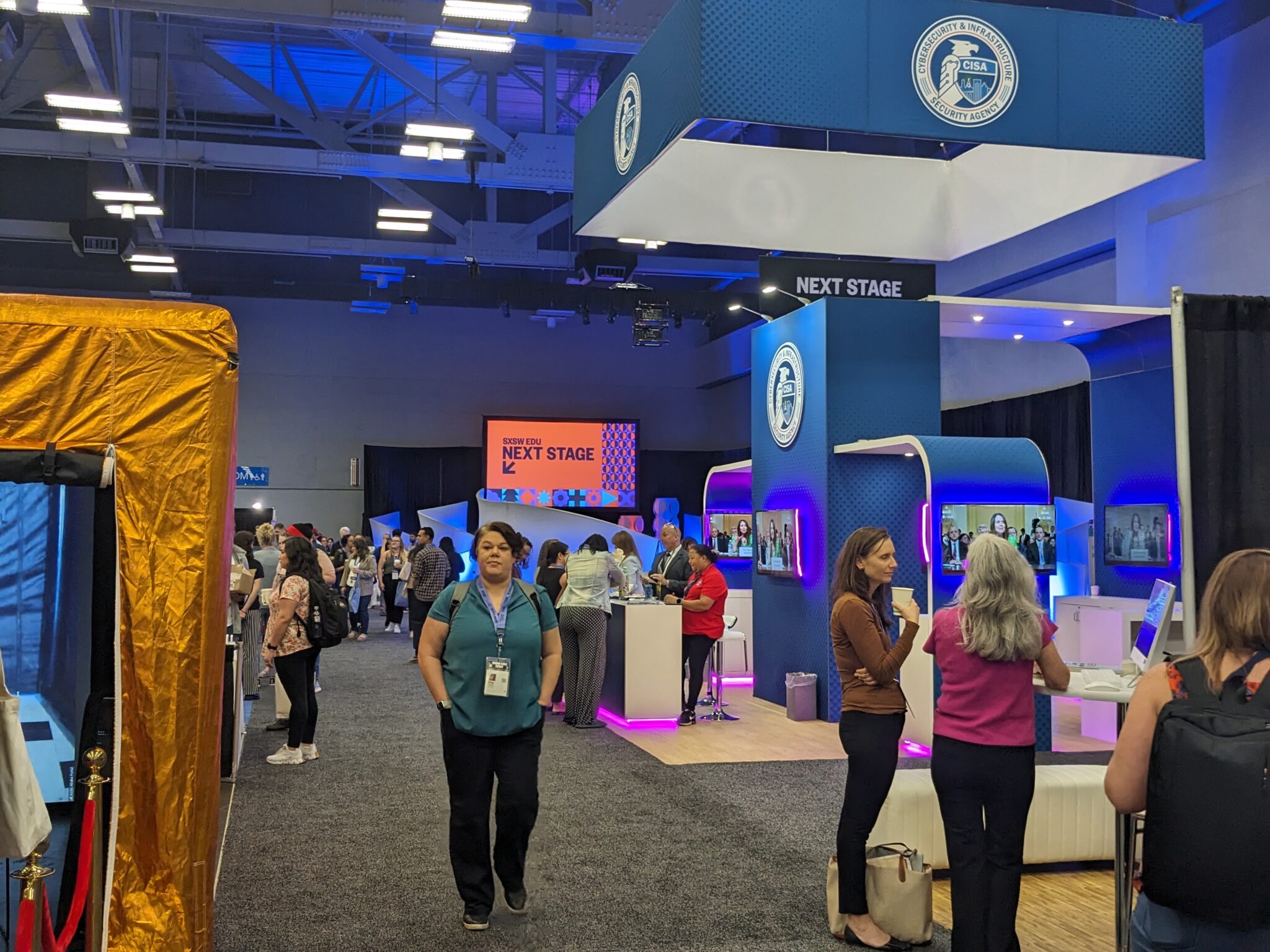SXSW EDU
SXSW EDU (pronounced “South by Southwest E-D-U”) is an annual educational-focused conference that is a part of the SXSW conferences. Each year, this conference takes place in Austin, Texas. It is a time for a reflection of the world’s most critical social issues seen through the lens of education. The big idea is to bring together teachers, students, educators, administrators, visionaries, policymakers, innovators, and others to share their experiences, insights, research, and ideas to help and vastly improve the future of teaching and learning. SXSW EDU consistently shared that their belief is that education has the power to inspire, elevate, and change the future in order to create a better tomorrow for learners everywhere. Last year, over 8,000 people from over 40 different countries attended both the in-person and online SXSW EDU conference, and it looked like there were at least just as many in attendance this year.
The conference offered a wide range of panels and sessions, in-depth and hands-on workshops, engaging learning experiences, interviews, mentorship meet-ups, a special pop-up bookstore, film screenings, an expo, networking opportunities, keynote speakers from many different walks of life, and much more. The most challenging part of any given day was trying to choose which sessions to attend when there were so many great options being offered at the same time!
Thanks to the generosity of Remake Learning and the Moonshot Grant, I, Jocelyn Farrell, Manager of STEAM and Education, was able to attend the full length of the conference from March 4 – 7, 2024. Here are some of the highlights of my time at the conference. It was truly an inspiring and wonderful experience!
Some Really Big Problems Facing Educators Today
One of the Keynote Speakers I enjoyed the most was listening to Spencer Russel, award-winning educator and founder of the company Toddlers Can Read. While his company is currently focused on early intervention and teaching students from a very early age how to read and spell, he gave a very sobering and powerful talk about the literacy problem in our country.
60% of third graders don’t meet grade-level expectations for where they should be reading, and roughly two-thirds of fourth graders read below their grade level. In 2022, the National Association for Education Progress report revealed that 8th-grade reading scores were the lowest since 1998. These students who fall behind in reading often stay behind. 63% of high school graduates are not proficient in reading. Over 43 million American adults have low literacy skills, and 52 million adults cannot read above a 3rd grade reading level.
It’s not just a problem in our own country, though: According to data from the International Literacy Association, there are an estimated 781 million people across the world who are illiterate (they cannot read a single word) or functionally illiterate (with a basic or below basic ability to read). Of these 781 million, about 126 million of them are young people. This accounts for 12% of the entire world population. The National Center for Educational Statistics shares that 21% of adults in the United States fall into the illiterate or functionally illiterate category. This means that 1 in 5 adults in our country are functionally illiterate. Research shows that adults who are functionally illiterate have lower self-esteem, experience higher unemployment rates, often have reduced income, higher incarceration rates, poorer health outcomes, and overall decreased life satisfaction.
Spencer Russell shared a very sad but inspiring story about an adult mother who reached out to him asking for help. She had found his website and company through a friend and was using it to help her toddler, but shared that she herself was completely illiterate. She hides this fact from her family and her friends because she’s too embarrassed and ashamed about her inability to read. She confessed that she can’t even read a menu, and when she goes out to eat, she waits until everyone else has ordered and simply picks something that someone else has ordered. Because of this conversation, Spencer and his company are currently working hard to come up with a plan to offer adult-focused reading literacy services in the not-too-distant future.
So what can we do about this? Unfortunately, there is no immediate answer or overnight solution, but it’s not enough to rely on simply sending students to school and expecting that every single child will be able to read proficiently. Reach out to friends and family who may be struggling with a reading problem and offer them support.
Another problem that was discussed quite frequently throughout most of the conference was diversity and STEM/STEAM Identities, with a lot of focus on how important it is for youth to see people who look like them (representation from females, people of color, different races, nationalities, neurodiversity, LGTBQ+ , etc.) succeeding in STEAM-focused jobs and fields.
One popular activity that exists to examine student’s prevailing stereotypes is known as the Draw A Scientist Activity. A study done several decades ago asked boys and girls in elementary school to draw a scientist. The results revealed a very shocking bias: 99.4% of the drawings depicted a male scientist. Out of 5,000 drawings that were gathered from 1966 – 1977, only 28 showed female scientists. All 28 of the female scientist drawings were drawn by female students. Since then, this experiment has been repeated many different times throughout the year with over 20,000 students across all grade levels. What the updated studies have shown is that children are now drawing female scientists more often. Today in elementary schools, if you ask a group of students to draw a scientist, 50% – 60% of male and female students will draw female scientists. However, this number drastically drops by the time students get to high school. As students get older, males and females both draw four times as many male scientists as female ones.
This got me thinking about what a regular operating day looks like here at our museum. If we asked students to draw a trolley operator, what kind of trolley operator would they draw? Would we see an equal number of male and female operators? What kind of diversity, if any, would we see in their drawings? This is also an area that we, as well as many other museums and nonprofits in our area, continue to struggle in.
Some tips that were shared to promote inclusion and diversity include:
- Use diverse posters, pictures, and media
- Promote books that highlight females
- Invite diverse guest speakers and role models
- Be mindful of gender bias in language (this ranges from avoiding language such as “guys” to also being mindful of saying phrases such as “future scientists” vs. “future female scientists,” as specifically calling out girls in this sense can reduce girls’ sense that science is an appropriate field for them)
- Encourage a growth mindset
- Create a safe where it’s safe to experience failure
The Maker Movement
One of the largest changes in modern-day education that has been reshaping the educational world over the last few years is the Maker Movement. The Maker Movement is essentially an umbrella term that has been applied to the shift and change in the mentality to inspire and motivate students towards using imagination to encourage independent thinking, tinkering, making, crafting, and creating. Some industry experts are even referring to the Maker Movement as the next generational Industrial Revolution. The Maker Movement has been driven by advances in technology, especially those that blur the line between the real world and the digital world. Students today are growing up in a world where the internet, artificial intelligence, robots, and 3D printers make just about anything you can dream a possibility.
What does that mean for education and today’s young students? The Maker Movement has been encouraging more hands-on, discovery-based learning in both formal and informal learning environments. This style of learning encourages learning by doing, not just by watching. It builds soft skills, such as problem-solving, collaboration, critical thinking, and creativity. It inspires innovation, showing students that there are often multiple solutions to the same problem. It also provides a safe space to fail, demonstrating that sometimes, failure can be a better teacher than success. Studies have also shown that when students learn in a hands-on environment, they’re much more likely to remember what they’ve done and what they’ve learned.
One of the biggest draws every day was the Expo, which was a very large room filled with innovative industry leaders, organizations, universities, and nonprofits from all around the world. There were so many inspiring individuals and companies to chat with every single day! Nearly all of them had many new, innovative, and trailblazing games, technologies, supplies, and services to show off. Best of all, most of these organizations had free daily demos and freebie kits to give away to educators that changed every day of the Expo! While many of these were geared specifically towards a regular K-12 classroom, there were still many opportunities to use much of what I was able to see, demo, and test out here to support and flavor the many different informal educational opportunities that the museum offers. Many of the tools and learning kits I got to test and build revolved around hands-on learning and the Maker Movement.
One organization in particular that I was very excited to learn about is the FutureMakers, whose website is simply “KidsMakeThingsBetter.com” – because they do! They create, produce, and sell “Sparks,” or playful engineering kits designed for students Preschool – 8th grade, which is our main target audience for our educational groups here at the museum between field trips and summer camps. These kits are perfect for both the classroom and informal educational spaces such as libraries and museums. Each kit is designed to help students build and improve their social and emotional learning skills (something that research is now showing that students are struggling with more than ever after the Covid-19 pandemic) while completing different engineering design challenges. These kits have all been pre-tested by thousands of educators and students. They are all also developmentally appropriate and align with national learning standards, such as Common Core and NGSS (Next Generation Science Standards).
Gamifying Education
Another big shift in the world of modern education is a growing and developing approach to increase a student’s motivation and engagement by incorporating game design elements into their educational environment. While at first thought, this might sound like something that would only be appropriate for younger students, it’s been growing from PreK – 12th and even making its way into higher education.
Why gaming? More than 2 out of every 3 Americans play games in some form (and this number doesn’t even include card games, board games, tabletop games, or physical children’s games like hide and seek or tag). Gamified activities have proven to help maintain student’s attention and interest.
There are many different ways to introduce gamification into the educational environment. Low-technology and easy set-up ideas include setting up trivia-style “game show” style activities (such as Jeopardy or Kahoot) or creating scavenger hunts. More high-tech, in-depth set-up ideas could be to create an Escape Room or Break Out Box.
One session I went through highlighted how using board games and tabletop games throughout a learning module (or here, perhaps part of a full-length field trip or summer camp day), is actually a fantastic way to teach the Engineer Design Process, something we very often spend time talking about during field trips and summer camps. The Engineering Problem Solving method consists of the following steps:
- Define the problem
- List possible solutions
- Evaluate possible solutions
- Develop a plan
- Evaluate the plan
- Implement the plan
By using this method of thinking to approach a problem, be it a game that students are playing or an engineering building task they are working on, helps students build collaborative skills, confidence in their decision making abilities, and builds critical thinking skills necessary for higher education, the STEAM industries, and life in general as an independent and successful person.
Putting the “T” in STEAM
A topic that many different presenters touched on (or focused on entirely) was AI: artificial intelligence! As one presenter in particular put it, we’re truly living in what sounds like a science fiction novel these days. There’s no getting around it: AI is here to stay. What educators and industry leaders want to focus on right now is asking how we can make AI work successfully for us. AI is becoming a real problem, especially in school right now, as many students have taken to asking AI-bots like ChatGPT to just write research papers for them. One interesting statistic that one panelist shared was that a year ago, ChatGPT and Google AI software were tasked with writing a series of clinical trial answers to be given to patients delivering both good and bad news (example: a patient finds out they have cancer). The responses generated by AI were rated more empathetic than real life doctor responses when given the same news to deliver to a patient!
One educator’s approach is to encourage schools and organizations who are interested in using artificial intelligence to think of AI like a team of interns. AI can be trained to run data analysis, analyze social media trends and patterns, create schedules, write newsletters, and provide prospective fundraising opportunities and match non-profits with donors. For educators, it was suggested that AI can be used to quickly find new activities for the classroom on any topic under the sun, write new, creative writing prompts, or encourage students to explore new topics. (For example, AI will never get tired of answering “why?” when a student asks a question and follows up with “why?” 600 times!) Students can use AI like a coach or a private tutor. Imagine if you had a team of five private tutors or coaches helping you – what would you ask them to do? How could they help you improve?
AI and robots (yes, real, working robots!) are also popping up in unexpected places in the workplace! One company was demonstrating how a robot could be used to welcome visitors into a space like a museum. Tasks that a Robot Greeter could provide include answering general questions, offer wayfinding services (“Where is the nearest bathroom?”), providing multilingual responses, touchless check-in, and taking care of digital cash transactions (such as paying for parking or admission). They can be programmed to exhibit emotions and even entertain guests by telling jokes and doing impersonations. It can also provide a modern touch of the latest, cutting-edge technology that could also provide potential guests with another reason to visit. Why a robot over a person? By having a robot focus on simple and repetitive tasks, it can free up a human colleague to resolve and tend to more complicated tasks.
One really awesome educational teaching tool I got to interact with (and received a free sample of!) is the Merge Cube. The Merge Cube is a black and silver foam cube that looks like it should be found aboard a futuristic spaceship. It is covered in raised designs that are able to be scanned by a smart camera (either with a phone or tablet), much like a QR code. By using an app designed to work in conjunction with the Merge Cube, the foam block can be transformed into a digital canvas. This can turn the Merge Cube into just about any three-dimensional object imaginable: a moving, functioning map of the solar system, an aquarium, a model of a working steam engine, or an ancient Egyptian dig site!
This kind of technology is known as AR, or Augmented Reality. It creates user-oriented experiences that allow anyone to hold digital, fully 3D objects in the palm of their hand. It’s a brand new way to interact with and learn about the digital world and the physical world all around us.
The Merge Cubes can be used with just a phone or tablet, but they are also compatible with several different types of Virtual Reality headsets, which allow for a fully immersive experience. It is also a wonderful tool to help integrate technology into early education, or even into a low-tech environment, to help make the connection between technology and the learning process. Anyone who uses a Merge Cube is able to engage with digital content using visual, auditory, kinesthetic, and tactile senses to create more memorable and impactful learning opportunities. Older students and more advanced learners can also create their own 3D creation software, such as Paint 3D and Tinkercad. Students get to use groundbreaking technologies, get a hands-on experience where they are able to dive into great details about whatever topic they are learning about without ever leaving the classroom or learning space, and they have fun while learning, too!
That’s All, Folks!
To say that I took in a lot of information during this conference would be the understatement of the year! If time allowed, I could probably very easily write another ten pages or so talking about every single session I attended, the amazing chats I had with folks from different industries, schools, and informal learning spaces, and all of the other exciting new learning strategies, games, and technologies I experienced. One big takeaway I have from the conference is validation that much of the educational programs here at PTM are following along with the current best practices, all of which are supported by research. I am excited to take everything I was able to learn and put it into practice for future programs!
